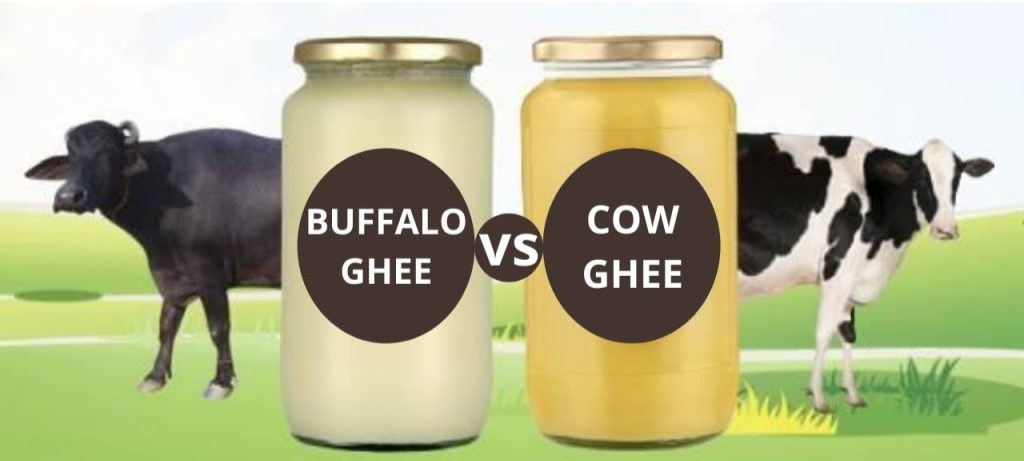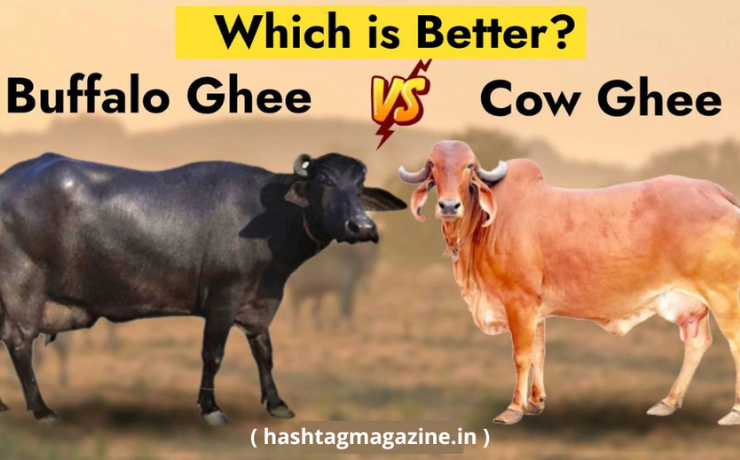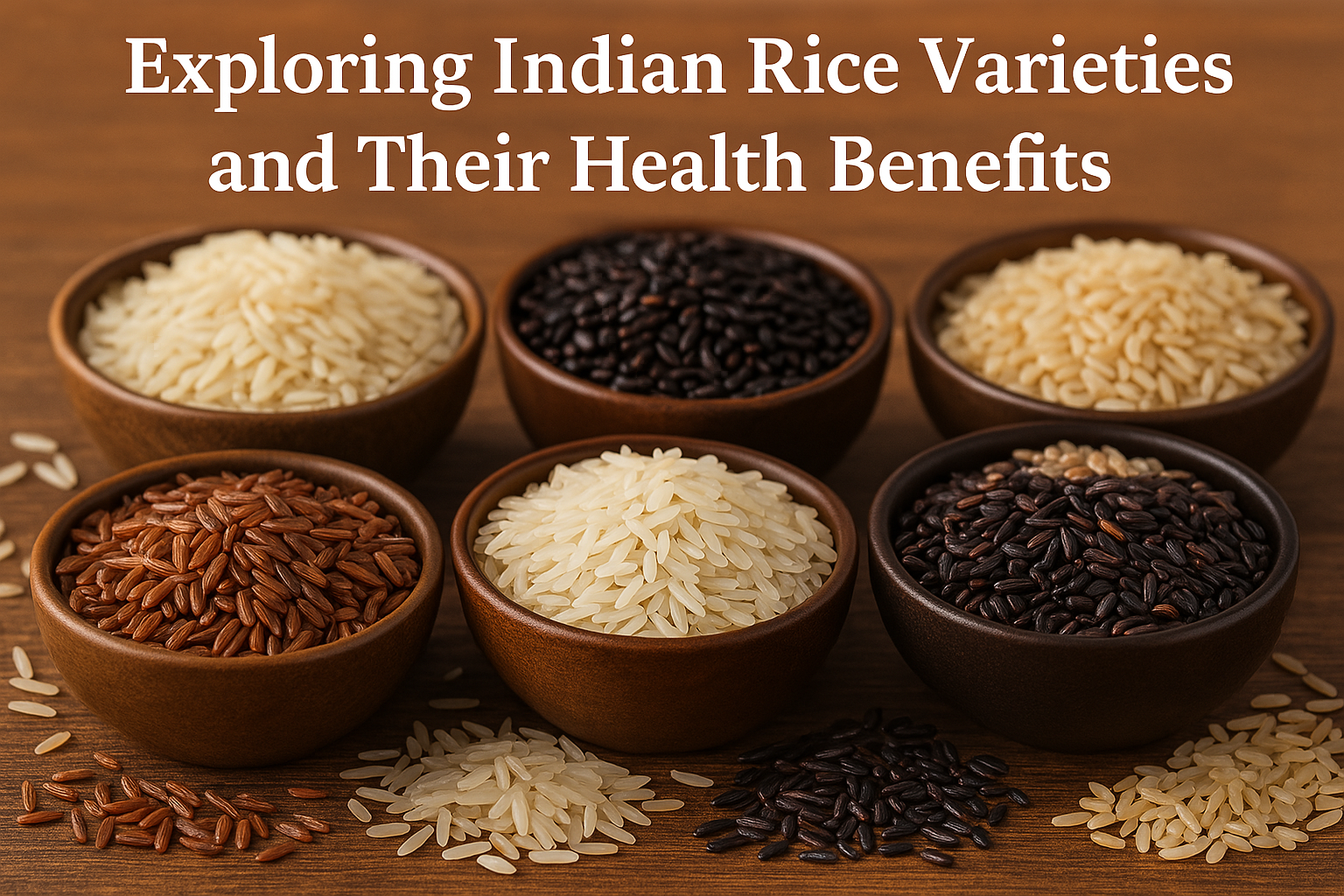Ghee has numerous nutritional benefits. It is determined by your specific needs, state of health, and digestive capacity. This is because it guarantees that the ghee it provides is pure and of high quality. Some of its many uses include- offered to several gods during worship and rituals, used in cooking, used in Ayurvedic medicine for nourishing and therapeutic purposes, and used in herbal preparations to boost the immune system and treat a variety of diseases. It also helps keep your body warm during the winters, helps treat common colds, and also improves skin.
India is currently the world’s largest producer and consumer of ghee, buffalo and cow milk. Since I was a young child, we consistently had desi cow ghee and drank cow’s milk. As I had only seen yellow ghee used at home as a child, I thought that was the only type of ghee available. But how can you be sure to get the healthiest kind when there are so many varieties of ghee in the market?
Sakshi Singh Clinical Nutritionist talks about Cow ghee Vs Buffalo Ghee: Which is healthier?
What is Ghee?

Ghee, also known as “fat,” may be used as a synonym for clarified butter, with one difference. Ghee is a fatty substance made from cows, buffalo, or other milk. Ghee can also be made from goat and sheep milk, as they are rare and difficult to find, it is not widely made. Ghee is made by first combining milk and then butter. The nutrients present in the clarified butter are beneficial for physical health. It provides the healthy fats needed to keep the liver and immune system healthy. Homemade ghee is much better than the readymade ghee available in the market.
In the traditional French style, the natural butterfat is strained straight away and utilised in its light golden state; the Indian technique takes the method a step further, by caramelising the milk solids earlier, then straining the butterfat to offer the ensuing ghee a nutty taste and a deeper colour. A stick of butter has an excessive percentage of butterfat, extra water and impurities, while ghee is pure, 100% unadulterated butterfat. Ghee helps in weight loss. It doesn’t increase bad LDL cholesterol, rather it improves good HDL cholesterol.
What is Clarified Butter?

Clarified butter, sometimes known as liquid gold, is simply butter with the milk solids and water removed. To clarify is to form clear, and that’s exactly what drawn butter is. Clarified butter is very popular in French cuisine, whereas, another form of it is buttermilk, an Indian staple. When butter is barely melted, it’s yellow and fairly opaque, which is called drawn butter. The opacity comes from everything within the butter that isn’t pure butter fat. Butter is a minimum of 80% fat, which leaves up to 20% of the “other parts.” The other parts are water and milk solids: proteins and sugars, which are the components that turn brown when making brown butter. When butter is clarified, it melts first, then it separates into the water portion and lastly the fat portion. As it heats up, the water boils and turns to vapour, the proteins and sugars collapse and sink to the underside of the pot and what’s left on top is the pure clarified butter.

The chemistry between Cow Ghee and Buffalo Ghee
Ghee is extremely beneficial for our health due to its rich amount of nutrients. It also helps with the production and nutrition of beneficial bacteria present in your intestines. As we now know that ghee is manufactured from both cow and buffalo milk, we should also be aware of the distinctions between the two forms of ghee made from various kinds of milk. You cannot fully profit from utilising ghee in your daily life if you are unaware of the advantages of both.
The following are the main distinctions between cow and buffalo ghee:
❖ Compared to cow milk, the texture of buffalo milk is more creamy.
❖ Compared to buffalo ghee, cow ghee offers more positive health effects.
Which is Healthier?
Desi ghee is often avoided because people fear they would gain weight from it, even though it is beneficial. Desi ghee has a lot of protein, good fats, and vitamins A, E, and K. It is beneficial for the heart, digestion, skin, and hair. Ghee comes in two colours- white, which is created from buffalo milk, and yellow, which is made from cow milk.
Buffalo Ghee
White ghee contains less fat than yellow ghee and can be kept for a very long time as it contains a high percentage of fat. It aids in bone preservation, weight gain, and increased cardiovascular muscle activity. Essential nutrients such as magnesium, calcium, and phosphorus are present in buffalo ghee.
Cow Ghee
Cow ghee is a powerhouse in nutrition. Cow ghee is easy to digest, beneficial for weight loss, and reduces adult and paediatric obesity. Buffalo milk lacks the A2 protein, but cow milk does. Ghee made from cows is the only source of A2 protein. Numerous amounts of protein, minerals, calcium, and vitamins can be found in cow ghee. Cow ghee enhances the sufficient blood cholesterol level, lowers dangerous blood cholesterol levels, and supports healthy heart function.

Which is Better?
Cow ghee is superior because it contains vitamin A carotene, which is healthy for the eyes and the brain. It is beneficial for digestion and contains antioxidant, antibacterial, and antifungal effects. When compared to cow ghee, buffalo ghee contains more fats and calories. Additionally, it aids in retaining the joints, colds, coughs, and phlegm, as well as having anti-ageing properties.
Conclusion:
Consuming either ghee has benefits of its own in the end. You can consume them based on their health benefits. Some people can use it to lose weight, while others can use it to gain weight and deal with heart-related difficulties. Therefore, including ghee in your diet regularly may be good for both your health and the growth of your body.

































